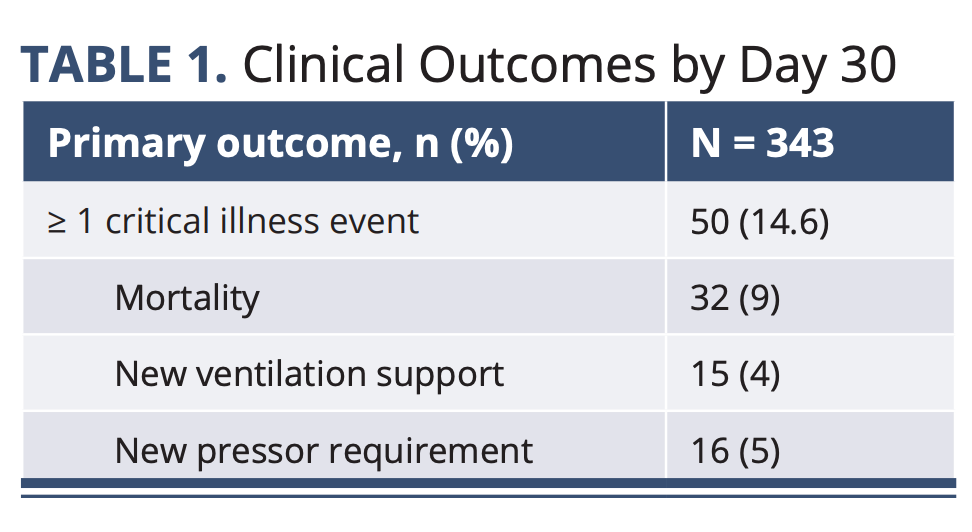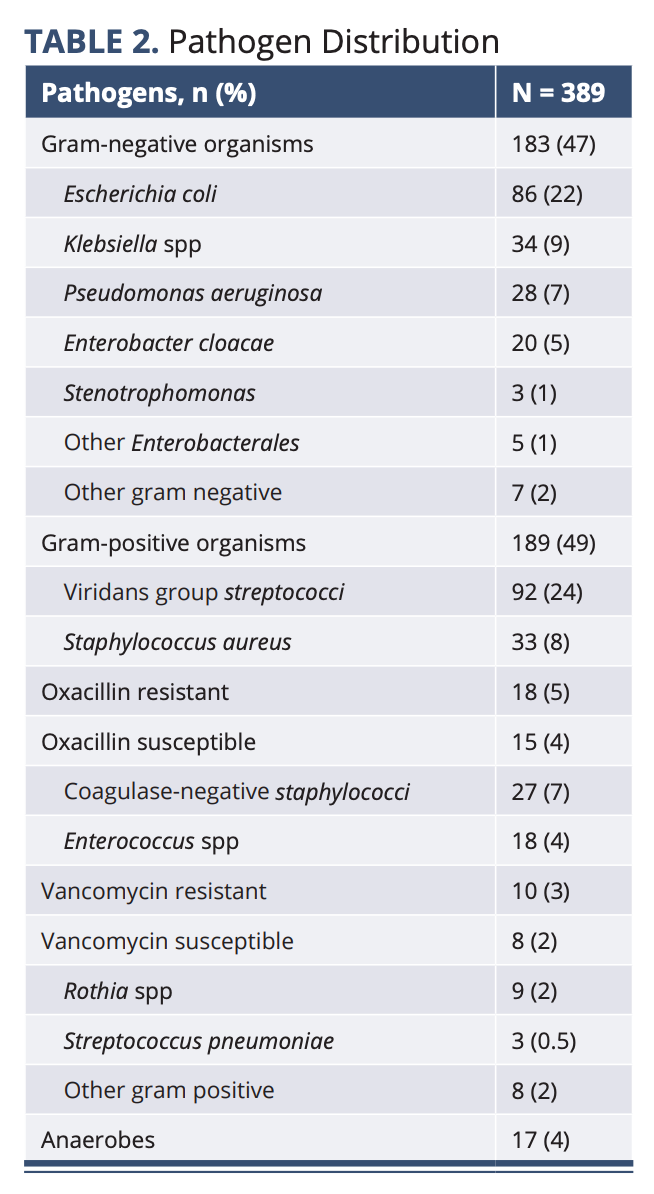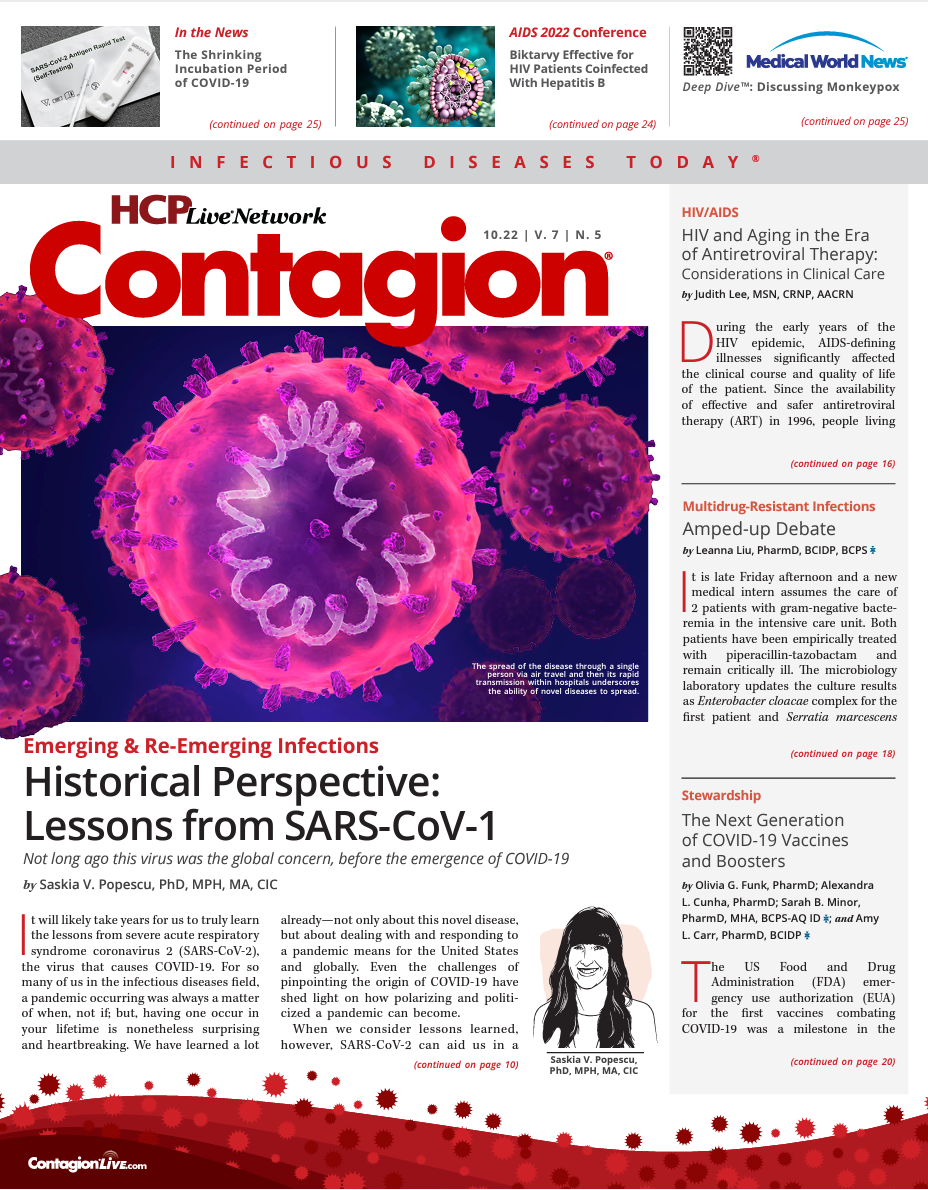Febrile Finesse: Are We Employing Appropriate Empiric Coverage in Patients With Neutropenic Fever?
Traditional therapy coverage does not include recent data that offers some updates in evaluating the current effectiveness of empiric antibiotic treatment.
Patients with hematologic malignancy requiring intensive chemotherapy or stem cell transplant who present with neutropenic fever require immediate antibiotics. National guidelines on the management of febrile neutropenia recommend empirically covering primarily gram-negative pathogens, particularly Pseudomonas aeruginosa.¹
Although gram-positive organisms have been more predominant historically, coverage of these pathogens did not translate to reduction in all-cause mortality. Therefore, gram-positive coverage is recommended only for patients with catheter-related infection, skin or soft tissue infection, pneumonia, or hemodynamic instability.² Unless there is a recent history of isolation, multidrug-resistant organisms are not generally considered when crafting an empiric antibiotic regimen. These guidelines, however, were released over a decade ago, with little additional data on the epidemiology of pathogens in this population during the interim period.
Overall rising rates of antimicrobial resistance in the community in combination with a paucity of contemporary data led Zimmer et al to evaluate the current effectiveness of empiric antibiotic therapies in high-risk cancer patients with febrile neutropenia due to bloodstream infection.³ This study included adult patients with hematologic malignancies who were treated for febrile neutropenia (ie, temperature higher than 38 °C and absolute neutrophil count <500 cells/μL) secondary to bacteremia across 14 large cancer centers in the United States. Notable exclusion criteria included patients receiving antibiotics outside a prophylaxis indication and those with contaminated blood cultures.
The primary outcome of interest was the development of “critical illness,” which is a composite end point encompassing a need for ventilator support or vasopressors, or death within 30 days from index blood cultures. Data of the infecting pathogens were collected for epidemiological purposes and used to determine rates of appropriate empiric antibiotic therapy. A total of 343 patient encounters were included in the final analysis: 68% of patients had received chemotherapy alone, whereas 32% had received a hema-topoietic stem cell transplant.
The median Pitt bacteremia score was 1 and 10% of patients required vasopressors. The primary outcome of 1 or more critical illness events occurred in 14.6% of patients. Additional details on clinical outcomes are listed in Table 1.

There was an even distribution of gram-negative and gram-positive pathogens among the 389 bacterial isolates recovered from study participants (47% and 49%, respectively). Additional pathogen distributions are listed in Table 2.

Common empiric antimicrobials include cefepime (62%) and piperacillin-tazobactam (23%). Resistant gram-positive coverage was empirically started in approximately half of patients (48%), with vancomycin as the most common agent. Cefepime and piperacillin-tazobactam were found to be active against 84% to 88% of gram-negative pathogens. Fluoroquinolones were active against 49% of gram-negative pathogens.
Overall, 86% of single gram-negative and 80% of single gram-positive bacteremia were covered by monotherapy with either cefepime, piperacillin-tazobactam, or meropenem. The findings of this study suggest that guideline recommendations to maintain an emphasis on empiric gram-negative coverage are still appropriate in most patients with high-risk febrile neutropenia.
From an epidemiological standpoint, this is further bolstered by a relative proportional increase in gram-negative pathogens compared with the historical predominance of gram-positive pathogens. Cefepime, in particular, remains a strong option to cover the majority of causative organisms despite growing concerns for multidrug resistance in gram-negative pathogens. Additionally, cefepime demonstrated activity against the majority of gram-positive isolates, particularly with Viridans group streptococci (VGS).
Additional data are needed to examine the role of piperacillin-tazobactam and carbapenems in VGS coverage. As with all empiric coverage, it is always vital to ensure that decisions are guided by local antibiograms and pathogen distribution. Although this study represented a geographically diverse patient population, most of the data were pulled from large academic medical centers, which may skew the predominance of pathogens.
Highlighted Study
Zimmer A et al. “Bloodstream infections in hematologic malignancy patients with Ffver and neutropenia: are empirical antibiotic therapies in the United States still effective?” Open Forum Infectious Diseases. July 2022;9(7). doi:10.1093/ofid/ofac240.
References
- Freifeld AG et al. Clinical Practice Guideline for the Use of Antimicrobial Agents in Neutropenic Patients. IDSA Guidelines. 2010;52(4):e61. doi:10.1093/cid/cir073
- Paul M et al. Empirical antibiotics against gram-positive infections for febrile neutropenia: systematic review and meta-analysis of randomized controlled trials. Journal of Antimicrobial Chemotherapy. April 2005;55(4):436-444. doi:10.1093/jac/dki028
- Zimmer A et al. “Bloodstream Infections in Hematologic Malignancy Patients with Fever and Neutropenia: Are Empirical Antibiotic Therapies in the United States Still Effective?” Open Forum Infectious Diseases. July 2022;9(7). doi:10.1093/ofid/ofac240.

